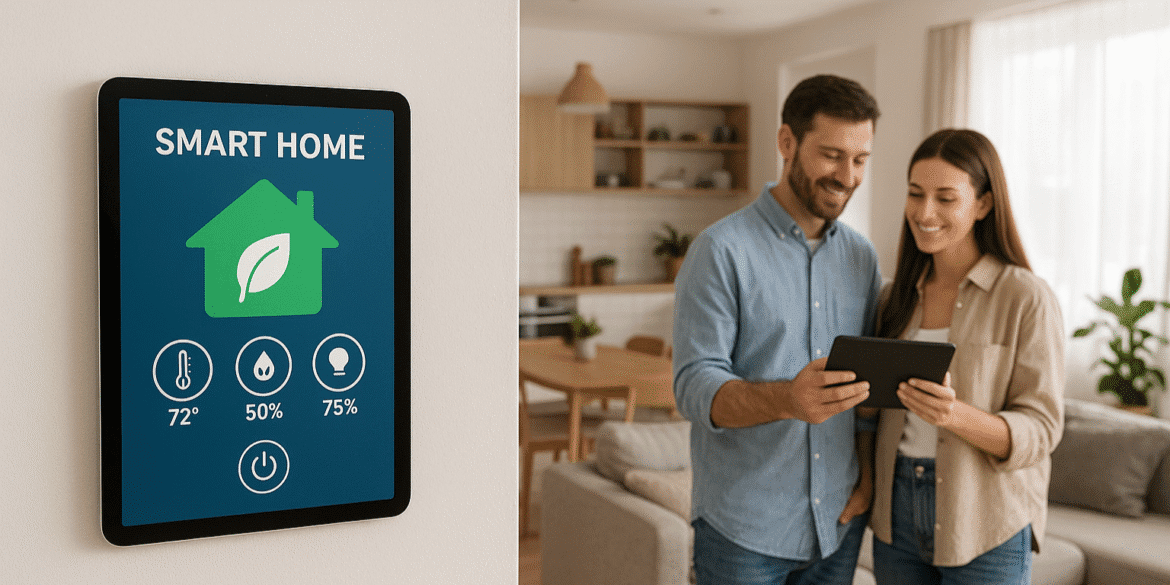Smart home technology has become a defining feature of the 2025 U.S. housing market, with a growing number of homebuyers prioritizing integrated devices that enhance energy efficiency, convenience, and security. According to the National Association of Home Builders (NAHB), more than half of new homes sold in the first quarter of 2025 feature built-in smart systems, a substantial increase from just 35% five years ago.
The Drivers Behind Smart Home Adoption
Buyers today are increasingly conscious of energy costs and environmental impact, making smart thermostats, lighting controls, and solar energy systems highly desirable. The ability to remotely manage home energy usage through smartphone apps offers significant utility bill savings, appealing to budget-conscious consumers.
Convenience and security are additional motivators. Smart locks, video doorbells, and integrated alarm systems provide peace of mind, while automated lighting and appliance controls simplify daily living.
Younger generations, particularly Millennials and Gen Z, who now comprise a growing share of homebuyers, view smart homes as essential, expecting seamless technology integration.
Market Trends and Builder Responses
Homebuilders are responding to demand by partnering with technology providers to offer pre-installed smart home packages. Major builders like Lennar and PulteGroup include smart home systems as standard or upgrade options, often bundling smart thermostats, security cameras, and energy-efficient appliances.
In addition, retrofitting existing homes with smart devices is surging, supported by declining costs and improved compatibility. Retail sales data from Statista shows that smart home device shipments increased 18% year-over-year in early 2025.
Builders emphasize the environmental benefits of smart homes, aligning with growing consumer interest in sustainable living. Many smart systems optimize energy use in real time, reducing carbon footprints.
Consumer Education and Challenges
Despite enthusiasm, a knowledge gap remains among buyers, especially older demographics, regarding setup, privacy, and interoperability of smart home devices. Realtors and builders are increasingly offering demonstrations and educational materials to bridge this divide.
Privacy concerns related to data collection and cybersecurity have led to heightened scrutiny. Buyers are advised to choose reputable brands and secure networks.
Integration challenges persist as diverse devices and platforms sometimes lack seamless communication, though industry standards and smart home hubs are improving compatibility.
Technological Innovations
Emerging trends include AI-powered home assistants that learn user habits to optimize energy and comfort, smart water management systems for drought-prone regions, and enhanced voice control interfaces.
Solar panel integration combined with battery storage systems is gaining traction, allowing homes to generate and store renewable energy efficiently.
Some communities are developing smart neighborhoods with interconnected infrastructure, offering residents enhanced services and environmental monitoring.
Economic and Environmental Impact
Smart homes contribute to lower energy consumption, reducing strain on power grids and supporting sustainability goals. The U.S. Environmental Protection Agency estimates that widespread smart thermostat adoption could save billions in energy costs nationally.
Homebuyers also see smart home features as value-adds, boosting property appeal and resale potential.
Real Estate Market Implications
Realtors report that smart home features often influence buyer decisions and justify higher asking prices. Listings highlighting energy efficiency and advanced technology attract more attention and faster sales.
Smart home certification programs and green building ratings increasingly incorporate technology integration, offering marketing advantages.
Future Outlook
Industry experts predict continued rapid growth in smart home adoption, driven by innovation, cost reductions, and consumer demand for sustainable, connected living environments.
Builders and technology providers plan expanded offerings with more customizable and scalable solutions, aiming to reach broader market segments.
Conclusion
Smart home technology is reshaping the American housing market by combining energy efficiency, convenience, and security. As buyers increasingly seek homes equipped with intelligent systems, the trend promises to influence home design, construction, and real estate marketing well into the future.

